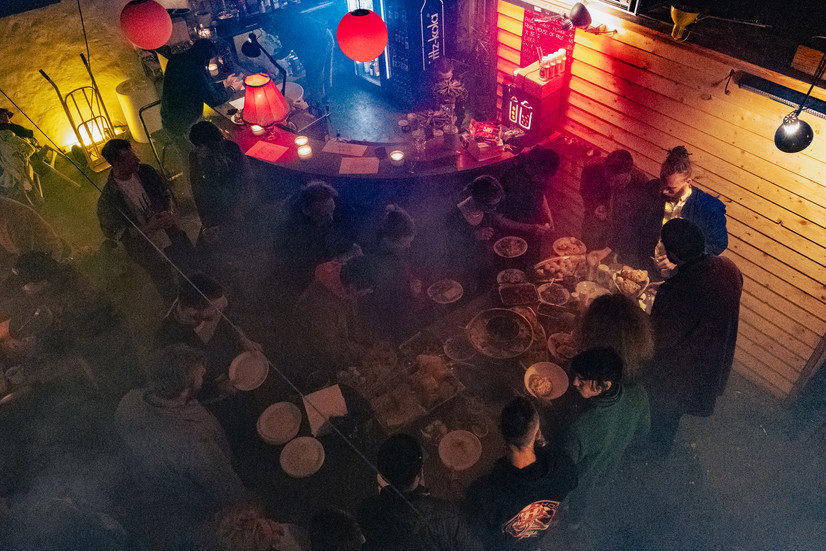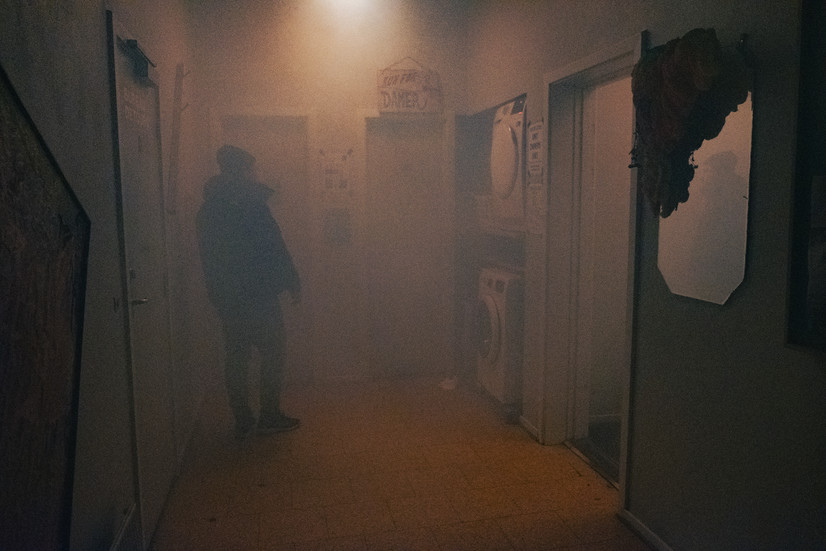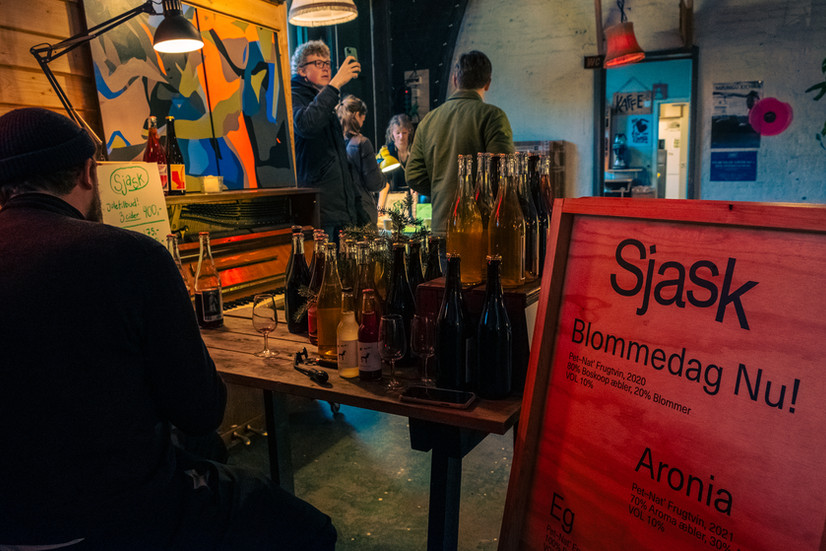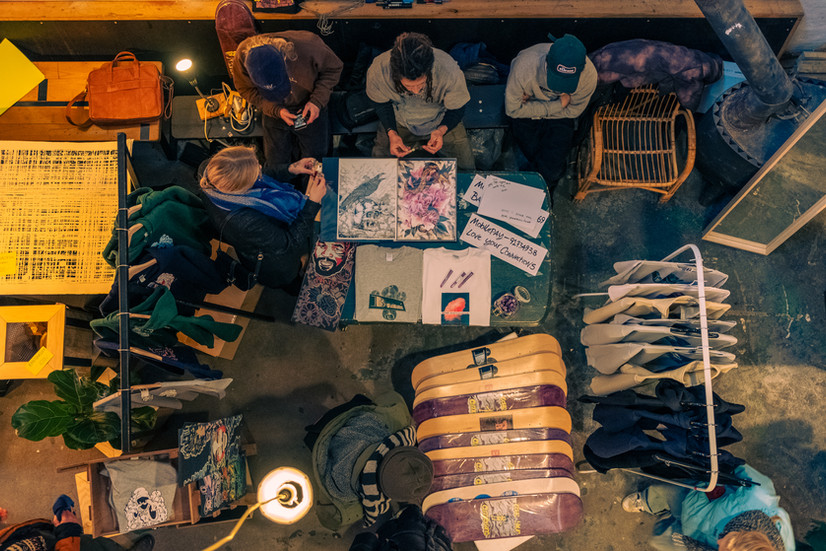- Mikołaj Chomacki
- Mar 17

HEJ What is Favilla Studio, in your words?
Jens Favilla Studio is an art and furniture studio that makes its products from recycled wood or recovered materials in general.
HEJ I found this fantastic quote on your website: “In connection with the school’s closure, tools such as beams and ribs had to be thrown away. Favilla Studio was lucky enough to get their hands on these exciting building materials, which contain a lot of history and personality.”
Jens I love a material that has some history behind it. I’m not the first one using it; someone has used it before, so it has some sort of ‘soul’ quality. Feeling from a different place is captured in the material. In those /points at Løbebanen piece behind/. You can almost feel like somebody has been there before.
HEJ I remember my old art school years. We used to recycle the old sculpture clay at the end of each year. With literal sweat, blood and tears of students in it. Made the art process a bit more dignifying. /giggle/
I’ve seen your earlier pieces, e.g., benches, also made from “old running track” — floorboards from disused or renovated sports halls.
Jens Yeah, so there in earlier days, we worked more with wood material. We used old flooring because the material quality from that time was much better than it is right now. Today the material can be filled with knots. In the old days trees grew more naturally. And then, of course, I’m a sports guy. I used to play a lot of badminton in my younger years. I have maybe spent half of my life in the sports. So I have to say my love for that material comes from that.
HEJ Favilla is older than (X), isn’t it? Where did it start?
Jens It started in Brazil. Actually. I went there with my family and visited some of the favelas, and I fell in love with how they constructed their buildings in different “styles” using things that they found in the neighbourhood.
HEJ Weren’t you afraid of any negative connections with the name?
Jens Although, of course, it’s a whole different scenario in Denmark. The material people throw away in “the Western world” has as much more or different potential as in Rio de Janeiro. I think the mindset is something you can definitely use in the other context. Even though it’s not life and death for us, it is there. You need to build a good house for shelter. Otherwise, you can get sick and stuff like that. So it’s a whole other scenario. I fell in love with them, with the visual story they tell. The way that they build was fascinating to me.
HEJ It shows the resourcefulness of the people who built them.
Jens Yes, and all the diversity. No two buildings look exactly alike. It is always some sort of a detail, something, a thing, found in the neighborhood that makes it personal. I love it, even though it goes against the rules. Yeah of course, the climate is also very different.
HEJ The Løbebaneprojekt-how did it start?
Jens Oh, it started with me and Alexander Muchenberger /from (X)/ going out there and taking a piece home first, like this one /points at a small, framed piece on the opposite wall/. That was one of them, and he started doing some sort of design process with it. Then he contacted me because I wasalso a big football fan. We have been talking about that material for 20 years now, “Darn it, that there is a running track around all around there.” The distance to the pitch is so far you can’t watch the match comfortably because of the løbebanen. We wanted to get rid of that, always; So we’re building a new stadium now. That makes it some sort of “The Berlin Wall of Aarhus.”
HEJ Oh, so that’s the concept everyone was passing around. It just brought you further away from the football.
Jens Yeah, but it’s something that everybody has talked about. “Oh, let’s get rid of that running track and build that new stadium.”
HEJ So, was it an issue for a lot of people who went to the stadium?
Jens Yeah, that’s why it’s been such a success: everybody has something to say about it.
HEJ I was thinking maybe it’s because a lot of people were running or training on it; maybe they felt a connection to actually being on it, not hating it.
Jens So everybody hates it, except for, of course... hmm... I think, I would say, maybe 60% or 70% of the people who come here, the football people, never want to see it again. All the others have been running on it and made a personal record of Denmark or something /laugh/.
HEJ So that’s an interesting play on contrast because I guess some people in Berlin also wanted a piece of the dividing wall. As a souvenir. How did people find out you created the first one? Did you reach out to anyone through advertising, media, or galleries?
Jens I have a journalist friend. I was talking to her about the project, and the maybe it’s an interesting story for you, I said. Then she made a video from this project, and it went viral, and everybody saw it. And it went all over the news. Suddenly the interest for the project... exploded.

HEJ Back to reminiscing old art school days - we were told this concept of a three-step pyramid. Artist being on the lowest level, middle is the collector, and the curator is the top one. Because the curator makes the exhibition, tells the collector, “This is art now. You should buy it.” I guess here it was journalism that helped the people to find sentiment in those frames. Out of pure curiosity, do you know how many pieces went?
Jens Around 500.
HEJ /discreetly in my mind, I try to figure out if there is a way to calculate the actual sqm of the stadium sold/
What’s in store for Favilla next year? Any plans on the horizon?
Jens This project has led to many interesting collaborations with other companies. So the next project is furniture for a running shop with running shoes: benches and interior design elements. So when you try a new pair of shoes, you can test how they feel in more ways.
HEJ I’ve seen the project of a shop in Oslo, it’s impressive.
Now, the last question: Do you have any tips for beginning artists or artists who have a crazy idea but don’t know if it will catch on?
Jens “Just do it.” /laughs/ Talk to your friends, talk about it, and make “a thing.” Be open to other opinions about your work so you don’t get suck in there. Force yourself to explain the project to other people. That’s always a good idea. You can see how to sell it to some company. Talk to many people about why you are making “this thing.” It could help you with the process.
find more FAVILLA at: https://www.favillastudio.dk
ig/fb @favillastudio.dk
or come to Institut for (X), byg. C, and ask for Jens :)
Part of the text was originally published in "Hej Nabo", an Institut for (X) community zine.

















































































































